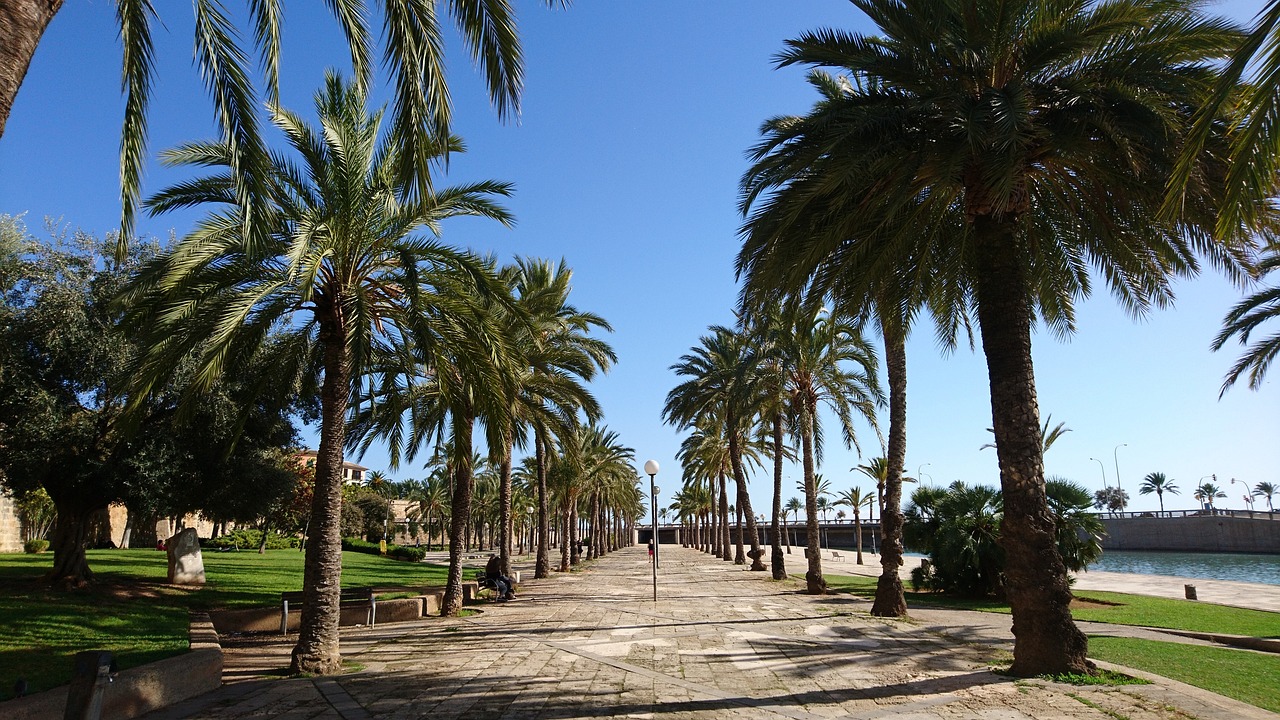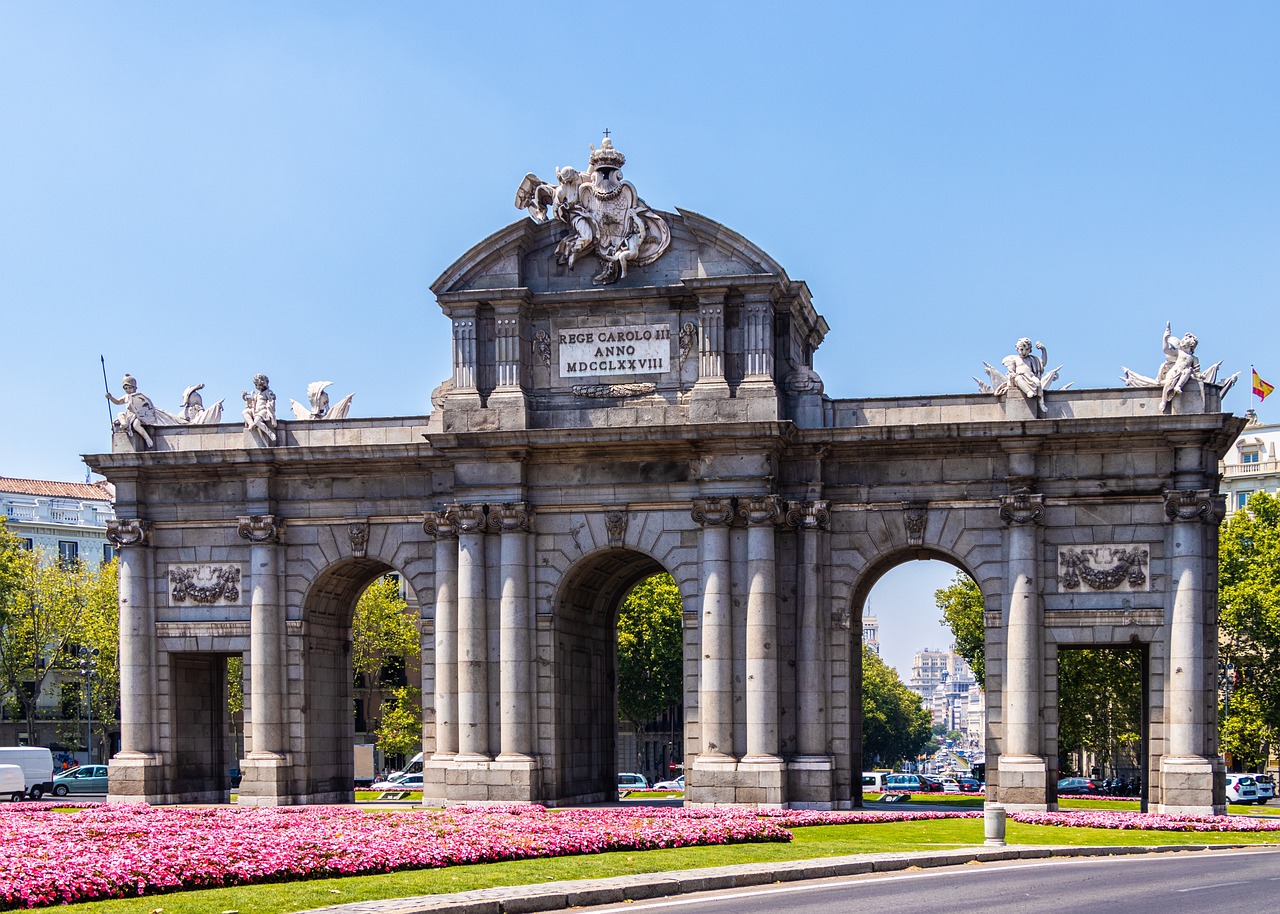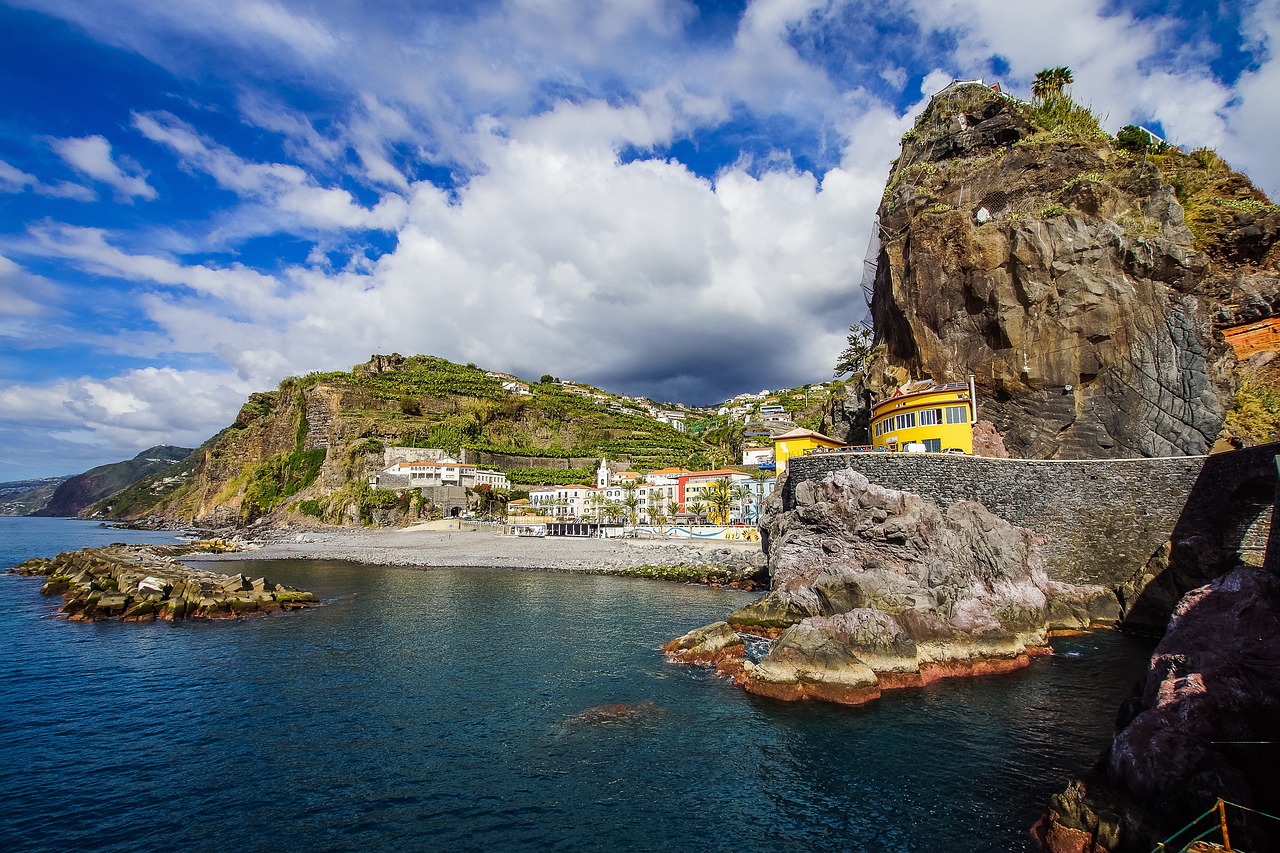Palma de Mallorca is a city located on the island of Mallorca, which is part of the Balearic Islands in the Mediterranean Sea. Mallorca is the largest of the Balearic Islands, which are an archipelago belonging to Spain. Palma de Mallorca is the capital city of Mallorca and is located on the southwestern coast of the island. It is a popular tourist destination known for its stunning beaches, historic architecture, and vibrant culture.
Short History
The history of Palma de Mallorca dates back to the Roman period, when the city was known as Palmaria. After the fall of the Western Roman Empire, Mallorca was ruled by the Byzantine Empire, followed by the Moors and then the Catalan Kingdom of Aragon. During this time, Palma de Mallorca became an important center of commerce and culture, with a thriving port and a rich architectural heritage.
In the 20th century, Palma de Mallorca became a popular tourist destination, attracting visitors from around the world with its stunning beaches, historic landmarks, and vibrant culture. Today, Palma de Mallorca is a modern and cosmopolitan city, while still retaining its unique cultural heritage and Mediterranean charm.
Architecture
Palma de Mallorca is known for its stunning architecture, which reflects the city’s rich cultural heritage and history. Here are some of the most notable examples of architecture in Palma de Mallorca:
- La Seu Cathedral: This Gothic cathedral is one of the most famous landmarks in Palma de Mallorca. Construction began in the 13th century and continued for centuries, resulting in a unique blend of architectural styles.
- Bellver Castle: This Gothic-style castle was built in the 14th century and is notable for its circular shape and central courtyard.
- Palau de l’Almudaina: This medieval palace was built in the 13th century and served as the residence of the Mallorcan monarchs. It is a stunning example of Gothic architecture.
- Plaça Major: This large, picturesque square is surrounded by beautiful historic buildings, including the Baroque-style Ajuntament (City Hall).
- Modernisme architecture: Palma de Mallorca also features a number of beautiful examples of Modernisme architecture, including the Gran Hotel and Can Casasayas.
Palma de Mallorca’s architecture is a testament to the city’s rich history and cultural heritage, with a mix of Gothic, Baroque, and Modernisme styles that create a unique and beautiful urban landscape.
Museums and Galleries
Palma de Mallorca is home to a number of museums and galleries that showcase the city’s rich cultural heritage and contemporary art scene. Here are some of the most interesting museums and galleries in Palma de Mallorca:
- Es Baluard Museum of Modern and Contemporary Art: This museum features a collection of modern and contemporary art, with a particular focus on works by artists from the Balearic Islands.
- Museum of Mallorca: This museum is dedicated to the history and culture of Mallorca, with exhibits ranging from prehistoric artifacts to contemporary art.
- Palau March Museum: This museum is located in a 17th-century palace and features a collection of works by Spanish and European artists, as well as a collection of historic weapons and armor.
- Can Prunera Modernist Museum: This museum is housed in a beautiful modernist building and features a collection of art and decorative objects from the late 19th and early 20th centuries.
- Fundació Pilar i Joan Miró: This museum is located in the former studio of the artist Joan Miró and features a collection of his works, as well as temporary exhibitions of contemporary art.
Palma de Mallorca’s museums and galleries offer a diverse range of cultural experiences, from traditional exhibits on the history of the island to contemporary art exhibitions showcasing the work of local and international artists.
Landmarks and Monuments
Palma de Mallorca is home to a number of interesting landmarks and monuments, ranging from historic buildings and churches to modern sculptures and public spaces. Here are some of the most noteworthy landmarks and monuments in Palma de Mallorca:
- La Seu Cathedral: This Gothic cathedral is one of the most famous landmarks in Palma de Mallorca, with its soaring nave, intricate stained glass windows, and stunning views of the city and sea.
- Bellver Castle: This Gothic-style castle was built in the 14th century and is notable for its circular shape and central courtyard, as well as its panoramic views of the city and surrounding countryside.
- Plaça d’Espanya: This large square is one of the main transportation hubs in Palma de Mallorca, featuring a striking red brick building, a central fountain, and numerous shops and restaurants.
- Paseo Maritimo: This waterfront promenade offers stunning views of the harbor and the sea, as well as numerous bars, restaurants, and nightlife spots.
- Joan Miró Foundation: This cultural center is located in the former studio of the artist Joan Miró and features a collection of his works, as well as temporary exhibitions of contemporary art.
Palma de Mallorca’s landmarks and monuments offer visitors a rich and diverse range of cultural and architectural experiences, from ancient castles and cathedrals to modern art installations and public spaces.
Parks and Green Spaces
Palma de Mallorca is home to a number of beautiful parks and green spaces, which provide a welcome respite from the bustling streets and offer opportunities for outdoor recreation and relaxation. Here are some of the most noteworthy parks and green spaces in Palma de Mallorca:
- Parc de la Mar: This park is located next to the sea and features a large lake, a fountain, and a pedestrian bridge that connects the park to the city center.
- Parc de la Feixina: This large park is located near the city center and features lush green lawns, tall trees, and a number of sculptures and monuments.
- Parc de Ses Estacions: This park is located near the train station and features a large pond, a playground, and a jogging track.
- Jardins de S’Hort del Rei: This beautiful garden is located near the Cathedral and features a variety of plants, flowers, and trees, as well as a central fountain.
- Paseo del Born: This pedestrianized street features a tree-lined promenade, benches, and outdoor cafes, as well as a number of historic buildings and landmarks.
Palma de Mallorca’s parks and green spaces offer visitors a chance to relax and enjoy the natural beauty of the city, from lush gardens and fountains to tree-lined streets and waterfront promenades.
Shopping Districts
Palma de Mallorca is a popular shopping destination, offering a wide variety of shops, boutiques, and markets that cater to a range of tastes and budgets. Here are some of the most noteworthy shopping districts in Palma de Mallorca:
- Passeig des Born: This pedestrianized street is lined with high-end shops and boutiques, including designer fashion brands and luxury jewelry stores.
- Avinguda Jaume III: This avenue is another popular shopping destination, featuring a mix of high-end and mid-range shops, as well as cafes and restaurants.
- Santa Catalina: This trendy neighborhood is known for its eclectic mix of shops, restaurants, and bars, with a focus on local and artisanal products.
- Plaça Major: This large square is home to a daily market, where vendors sell a range of goods including fresh produce, artisanal crafts, and souvenirs.
- El Corte Inglés: This department store is a popular destination for both tourists and locals, offering a wide range of products including fashion, beauty, electronics, and home goods.
Palma de Mallorca’s shopping districts offer visitors a chance to indulge in some retail therapy while exploring the city’s unique and diverse cultural offerings.
Food and Drink
Palma de Mallorca is a city with a rich culinary heritage, influenced by its Mediterranean location and the many cultures that have passed through the island over the centuries. Here are some of the top foods and drinks to try in Palma de Mallorca:
- Sobrassada: This is a cured pork sausage that is a staple of Mallorcan cuisine. It is typically spread on bread or used as a filling for pastries.
- Paella: This is a classic Spanish rice dish that is popular throughout Mallorca. It typically includes seafood, chicken, and vegetables.
- Ensaimada: This is a sweet pastry that is made with flour, sugar, eggs, and pork lard. It is often served for breakfast or as a dessert.
- Tumbet: This is a traditional Mallorcan dish that consists of layers of fried eggplant, potatoes, peppers, and tomatoes, topped with breadcrumbs and baked in the oven.
- Local wines: Mallorca is known for its wines, which are made using indigenous grape varieties. Some of the most popular wines to try include the red wine Manto Negro and the white wine Prensal Blanc.
Palma de Mallorca offers visitors a wide range of culinary experiences, from traditional Mallorcan dishes to international cuisine and local wines.
Transportation
Palma de Mallorca has a number of transportation options that make it easy to get around the city and the island. Here are some of the best ways to move around Palma de Mallorca:
- Walking: Palma de Mallorca is a relatively small city, and many of its main attractions and landmarks are within walking distance of each other. Walking is a great way to explore the city’s charming streets, alleys, and neighborhoods.
- Cycling: Palma de Mallorca has an extensive network of cycling paths and lanes, making it easy to get around on two wheels. There are several bike rental shops in the city, and bikes can also be rented through the city’s bike-sharing program, BiciPalma.
- Public transportation: Palma de Mallorca has a comprehensive public transportation system that includes buses, trains, and metro lines. The bus system is particularly extensive, with routes that cover the entire island.
- Taxis: Taxis are readily available throughout Palma de Mallorca, and can be hailed on the street or booked in advance through a taxi app.
- Car rental: Renting a car is a popular option for those who want to explore the island at their own pace. There are several car rental companies in Palma de Mallorca, and the city has a well-developed road network that connects it to the rest of the island.
Palma de Mallorca offers visitors a variety of transportation options that make it easy to explore the city and the island, whether on foot, by bike, by public transportation, or by car.
City Safety
Palma de Mallorca is generally considered a safe city for visitors. Like any city, it is important to take basic precautions to ensure personal safety, such as being aware of your surroundings, avoiding isolated areas at night, and keeping valuables secure. However, compared to other cities in Europe, Palma de Mallorca has relatively low levels of crime and violence, and incidents of serious crime are rare. The city also has a well-trained and well-equipped police force that is dedicated to ensuring public safety. As with any travel destination, it is always a good idea to stay informed about the local situation and to exercise caution and common sense when exploring the city.
Expensive or Cheap
Palma de Mallorca can be an expensive city, particularly in the high season when tourist demand is at its peak. Prices for accommodations, restaurants, and attractions can be higher during this time, and it is important to budget accordingly. That being said, there are also plenty of affordable options for those looking to save money. In general, prices for goods and services in Palma de Mallorca are comparable to other major European cities, and visitors can expect to pay similar prices for food, transportation, and entertainment. However, those looking to save money can do so by seeking out budget-friendly accommodations, eating at local cafes and markets, and taking advantage of free or low-cost attractions such as parks and beaches.
Best Time to Travel
The best time to travel to Palma de Mallorca, the capital city of the Balearic Islands, is from May to September. During these months, the weather is warm and sunny, making it perfect for beach activities and outdoor adventures. However, keep in mind that this is also the peak tourist season, and prices for accommodation and flights may be higher than other times of the year.
If you prefer to avoid the crowds and enjoy a more relaxed vacation, you can consider visiting Palma de Mallorca in the shoulder season, which is from April to May or from September to October. The weather is still pleasant, and you can also take advantage of lower prices and fewer crowds.
Winter months (from November to March) are the least popular for tourism due to colder temperatures and higher chances of rain. However, if you don’t mind the weather, you can still find great deals on accommodation and experience the city’s cultural attractions without the crowds.
Date Ideas
Palma de Mallorca is a romantic destination with plenty of options for a memorable date. Here are some ideas for a romantic date in Palma de Mallorca:
- Sunset cruise: Take a sunset cruise around the bay of Palma de Mallorca and enjoy stunning views of the city skyline and the sea.
- Beach picnic: Pack a picnic basket and head to one of the many beautiful beaches in Palma de Mallorca for a romantic afternoon by the sea.
- Rooftop bar: Enjoy a drink at one of the many rooftop bars in Palma de Mallorca, which offer stunning views of the city and the sea.
- Fine dining: Indulge in a romantic dinner at one of Palma de Mallorca’s many fine dining restaurants, which offer a range of cuisine from traditional Spanish to international flavors.
- Old town stroll: Take a stroll through Palma de Mallorca’s historic old town, with its charming cobblestone streets, ancient buildings, and hidden courtyards.
- Wine tasting: Visit a local winery and sample some of the island’s famous wines, while enjoying the picturesque countryside scenery.
Palma de Mallorca offers a variety of romantic date ideas for couples, from scenic boat rides and beach picnics to fine dining and wine tasting.
Fun and Interesting Facts
Here are some fun and interesting facts about Palma de Mallorca:
- Palma de Mallorca is the capital city of the Balearic Islands, an archipelago located off the east coast of Spain.
- The city is home to one of the largest Gothic cathedrals in Europe, known as La Seu.
- Palma de Mallorca has a rich cultural heritage, with influences from the Moors, the Romans, and the Spanish.
- The city is famous for its beautiful beaches, which are among the most popular in Europe.
- Palma de Mallorca has a thriving food and wine culture, with a wide range of traditional and modern cuisine on offer.
- The city is also home to a number of music and arts festivals throughout the year, including the Palma International Boat Show and the Mallorca Live Festival.
Overall, Palma de Mallorca is a beautiful and culturally rich city that offers visitors a range of experiences, from scenic beaches and historic landmarks to fine dining and cultural events. Whether you’re looking for a romantic getaway or a family vacation, Palma de Mallorca is sure to delight with its sunny climate, charming streets, and welcoming atmosphere.



